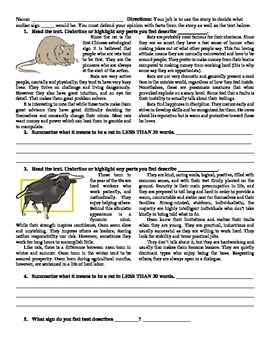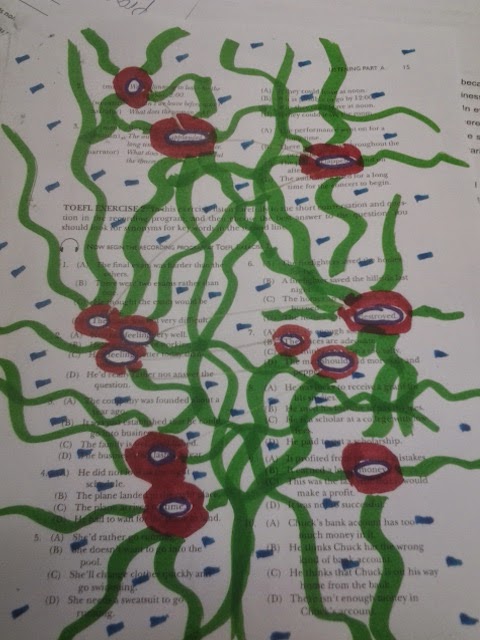I think alphabet books are great for ALL levels of English classes. Lower level classes can use them to help improve their letter recognition. Whereas older students can mimic the templates the books provide and create their OWN alphabet books.
I really think having students create their own books is an AMAZING project! I am hoping to put up a step by step process (including worksheets) by Monday.
In the meantime, here are SEVEN alphabet books that I think are great for students to peruse.
 This book has simple clipart-like graphics which I like because it shows students that their own book's graphics don't need to be overly complex.
This book has simple clipart-like graphics which I like because it shows students that their own book's graphics don't need to be overly complex.It is easy for students because it follows a set pattern. LETTER is for ANIMAL and a(n) ANIMAL can't VERB like a DIFFERENT ANIMAL.
It uses rhymes, and repeats animals throughout the book making it easy for younger students to follow along. Note: some of the rhymes are partial rhymes which I normally avoid as a teacher. If.you are also that way, maybe you should skip this book.
Since it uses a pattern it is also a GREAT "template" for students to follow with other categories
People: "A is for astronaut and an astronaut can't speak languages like a polyglot!"
Food: "A is for apricot and an apricot isn't small like a kumquat."
 You'll notice that a lot of alphabet books are about animals. While that's great, I encourage my students to pick creative themes. As such, I enjoy showing them The ABC's of Kindergarten since it isn't about animals!
You'll notice that a lot of alphabet books are about animals. While that's great, I encourage my students to pick creative themes. As such, I enjoy showing them The ABC's of Kindergarten since it isn't about animals!The book itself isn't very fancy LETTER is for WORD. Then there's a sample sentence.
Students can use this"template" if they like, though it isn't very creative.
H is for hamburgers. Our cafeteria's hamburgers are the best!

For example: "K is for kangaroo hop hop hop. L is for lion ready to chop."
The graphics are super adorable. Plus the writing is simplistic enough to be an attainable goal for your your students. Even though this is about animals, it works well for all topics.
For example, "T is for a trombone. Being a really big trumpet, trombones are fun to play. U is for ukulele. This small guitar, coming from Hawaii, needs a lei.

The graphics show the monster surrounded by lots of words starting with the appropriate letter.
The sentence is very simple. For example: Being at the beach the belchamonster avoids the sun. The picture would then have a beach ball, a balloon, etc.
The creativity in this makes me feel like students could do something similar and have a LOT of fun.
Most of my students use clipart that they find online to make their alphabet books.
A few of them use pictures, but otherwise they don't get very creative. That's why I think this is a GREAT alphabet book.
Basically there are scenes made of bricks for each letter. The students are invited to examine the scene and find things that start with the given letter.
Very dynamic, involved and unique (compared to the other graphics).
 This book is unique because each of the letters is designed to look like the animal. Some of them, like the octopus, are pretty good. Others, like the pig, involve some suspension of belief.
This book is unique because each of the letters is designed to look like the animal. Some of them, like the octopus, are pretty good. Others, like the pig, involve some suspension of belief.Another awesome part, is if you buy this book you can download the coloring book version for free and allow students to color in the book (perhaps making your own version for the class library?)
The text is written in limerick form. If you teach limericks in your class it could be fun to make your own limerick book!
 This last book is fun because of the theme. The author didn't pick animals even though it is a book about rats. He picked the fun theme of pirates! He also made his book follow a plot!
This last book is fun because of the theme. The author didn't pick animals even though it is a book about rats. He picked the fun theme of pirates! He also made his book follow a plot!Most of my students steer away from a plot when making their books, but I find that it can be a really fun way to put an alphabet book together. Plus, it makes it very engaging for the audience.
Just check out this trailer for the book:
Do you have a favorite alphabet book?

































